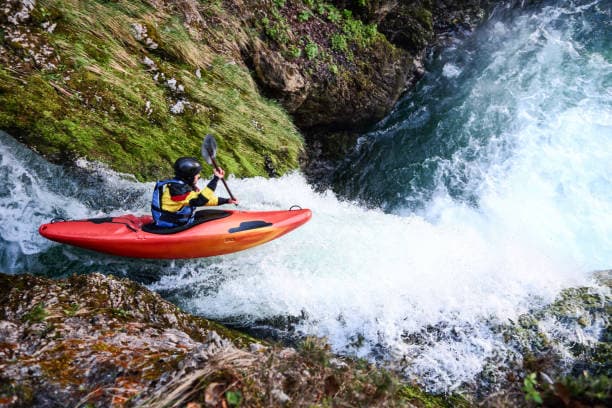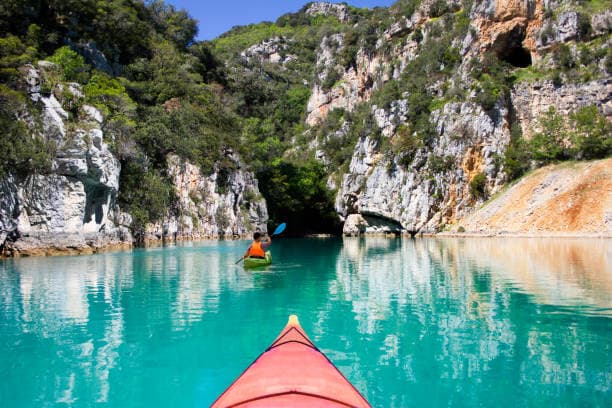Choosing Between a Kayak and a Canoe: Finding Your Ideal Watercraft

For water lovers and travellers, deciding involving a kayak and a canoe might be challenging. Each vessel is perfect for a distinct set of circumstances and tastes because to its unique characteristics and benefits. To help you make a well-informed choice, we’ll go over the main differences between canoes and kayaks in this post.
What is the definition of a kayak and a canoe?
A kayak is a compact and slender craft intended for speed and high performance on the water. Due to its design, a kayak can glide over the water more swiftly and with reduced resistance. Rowers are seated in one or more cockpits, sitting facing the direction of travel and extending their legs out in front of them. Utilizing a double-bladed paddle enables easier control and maneuverability of the kayak, facilitating sharp turns and sustained high speeds over extended durations. This design makes the kayak suitable for diverse aquatic activities, including water sports, ocean voyaging, and rapid river rafting.
A canoe, distinct from a kayak, features taller sides to enhance stability and load capacity, along with a broader build. These characteristics render the canoe especially ideal for fishing, family excursions, and the transport of goods.In a canoe, paddlers stand or sit on benches and manoeuvre the boat with a single blade. While it takes more work to manoeuvre than a kayak, this layout makes direction and speed changes simple. Due to its elevated sides providing additional shielding against water and waves, the canoe is excellently suited for serene lakes and expansive rivers. Its spaciousness further allows for versatile usage, from enjoying a waterside picnic to embarking on extended adventures.
Differences in management
Let’s take a closer look at how the design variations between kayaks and canoes influence their load capacity, velocity, stability, control, and agility.
Kayak: Adaptability and Velocity
The maneuverability of the kayak comes from its narrow and long hull, which allows you to shift course quickly and easily. This characteristic makes the kayak ideal for rafting on winding rivers where sharp turns and obstacles such as boulders and trees are common. Paddlers can use the twin-blade paddle to perform various maneuvers such as side strokes, back paddles and “twists”, allowing them to control the kayak effectively even in difficult conditions.
The kayak’s minimal displacement and aerodynamic form provide its speed. The kayak’s ability to move more swiftly than a canoe is attributed to its streamlined and compact hull, reducing resistance from the water. This is particularly apparent on open water and lengthy crossings where it’s critical to move fast across distances.
Paddling: Firmness & Roominess
Thanks to its spacious hull and high sides, the canoe stands out for its excellent stability on the water surface. The canoe’s design features give it considerable stability, especially on serene bodies of water, like lakes or slow-flowing rivers. The canoe is a superb option for families with kids or beginner paddlers, providing a safe and comfortable water experience thanks to its steadfast stability.
One of the primary advantages of a canoe is its generous capacity. Its wide hull and elevated sides offer plenty of room for several passengers, along with a substantial amount of equipment or cargo. This makes the canoe an ideal choice for extended journeys requiring the transport of camping essentials like tents, sleeping bags, and more, such as family camping excursions and fishing outings.
Areas of application
Based on their distinct qualities and uses, let’s examine more closely at the ways in which kayaks and canoes are employed in different activities.
Kayak: Agility and Specialization
Thanks to their rapid pace and nimbleness, kayaks are perfectly suited for competitive paddling. They excel in ocean journeys where quick distance traversal and adept wave navigation are crucial. In whitewater rafting, kayaks enable enthusiasts to navigate swiftly moving waters and navigate through demanding obstacles like rapids and eddies. Moreover, kayaks are widely favored in racing events on water, where their swift attributes contribute to competitors achieving remarkable performances.

There are specialized kayak models equipped for fishing and diving. To provide extra steadiness when casting a fishing rod or preparing for a dive, these kayaks are often equipped with enhanced stabilization systems. With the addition of optional features such as rod holders, storage compartments for gear, and platforms designed for easy water entry and exit, they emerge as the perfect option for those passionate about fishing and diving.
Canoes: Adaptability and Suitability
The stability and ample space provided by canoes render them excellent for family outings. The canoe easily accommodates the whole family, including children and pets, providing a comfortable and safe journey on the water. The high sides and wide hull contribute to the stability of the vessel, reducing the risk of capsizing during unexpected movements or waves. Therefore, the canoe becomes the perfect vehicle for quiet travel on rivers, lakes and bays.
Canoes are also ideally suited for extended voyages and adventures on rivers and lakes.Their capacity allows them to carry a large amount of gear including tents, sleeping bags, food and other equipment needed for multi-day camping trips. The stability of the canoe ensures safety and comfort during long crossings, and the ability to easily steer the boat even when fully loaded makes it an indispensable traveling companion.
How should one decide?
Think about the following aspects while deciding between a canoe and a kayak:
- The kind of water body you intend to go on: winding rivers or open bodies of water.
- The purpose of the trip: fast rafting, fishing, family vacations, or long expeditions.
- The quantity of passengers and belongings you must bring along.
The decision to opt for a kayak or a canoe hinges on your individual likes and the specifics of your journey. Each vessel type brings distinctive advantages that can amplify your enjoyment while navigating the waters. The key is to enjoy the adventure, regardless of your chosen means of transportation!
Benefits and drawbacks
Kayak
Benefits:
- Excellent dexterity and quickness.
- Easy to control for one person.
- Protection from water thanks to a special hatch.
Drawbacks:
- Limited cargo space.
- May be more difficult to deal with wind due to low seating.
Canoe
Benefits:
- Spacious and cosy for a number of travellers and goods.
- Steadiness on still water.
Drawbacks:
- Slow down in comparison to kayaks.
- More work to steer by yourself.